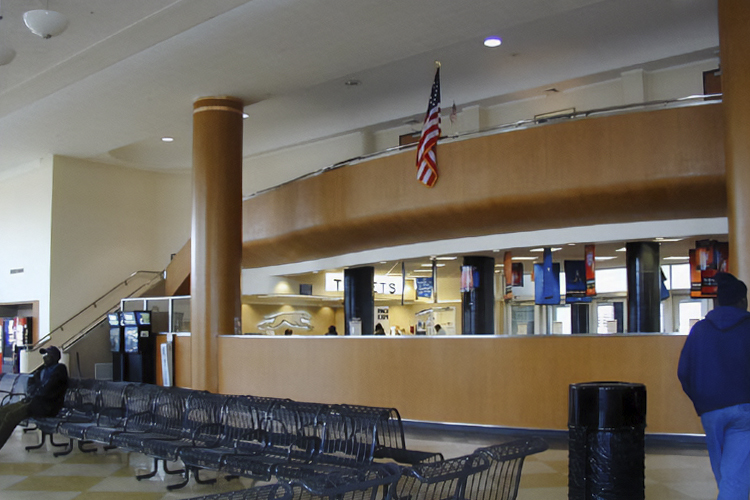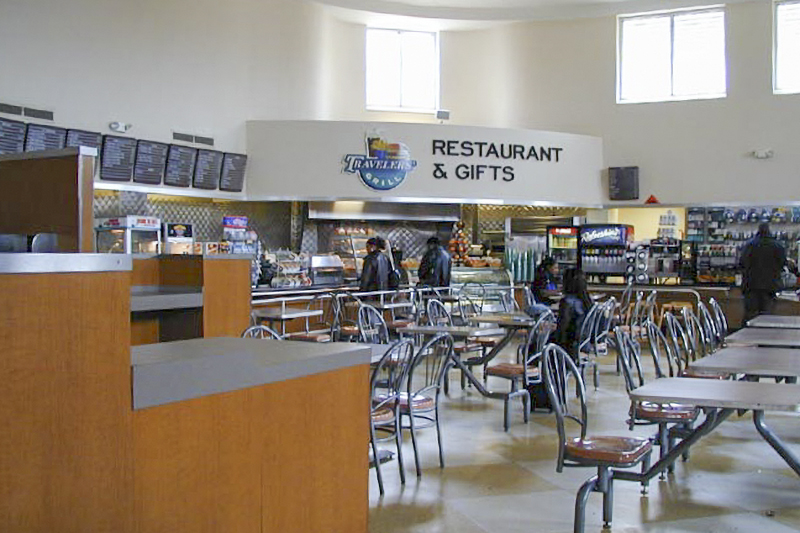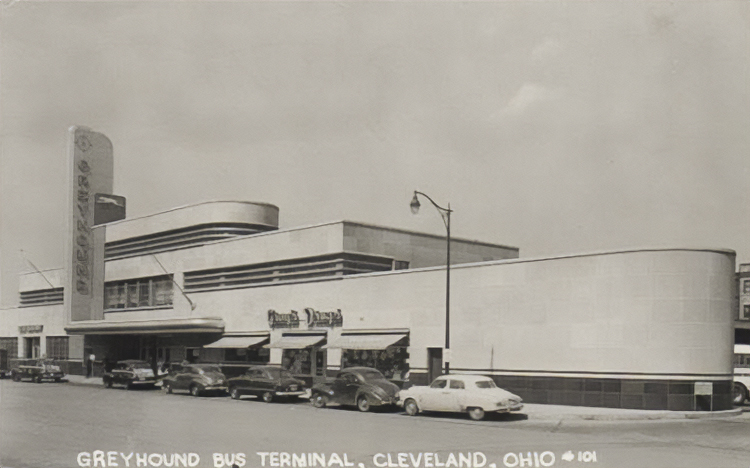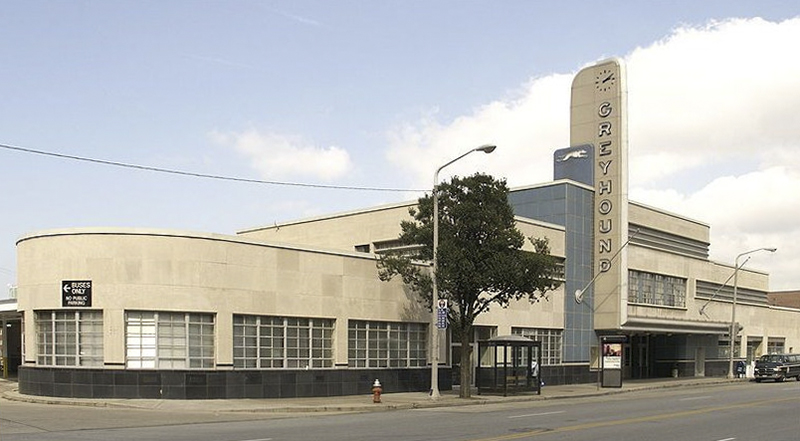
Cleveland Greyhound Bus station: The ideal of streamline moderne style
Louisville, Kentucky-based architect William Strudwick Arrasmith built a lucrative architecture career, designing many Art Deco and Gothic buildings in Kentucky and Indiana—including the 29-story 1963 The 800 Apartments, which was the tallest building in Louisville for almost a decade, Bowman Field’s 1929 administration building outside Louisville, and the 1939 Kentucky State Reformatory.
Despite an impressive design portfolio, Arrasmith is best known for his contemporary vision in his Streamline Moderne-style design of more than 60 Greyhound Bus stations in the United States and Canada between 1937 and 1948—during an era when coach bus travel was considered a glamorous mode of transportation.
Cleveland Greyhound Bus stationThe 1948 Cleveland Greyhound station at 1465 Chester Ave. is a stellar example of Arrasmith’s Streamline Moderne Greyhound stations—many of which employed the 1930s Art Deco twist of using long, horizontal lines and curving forms with a somewhat nautical look that implied speed and motion, with a vertical marquee spelling out “Greyhound.”
The technique gained popularity in the 1930s as a way to give a sleek modern look to everything from telephones to toasters, to trains and buses, and even J. Milton Dyer’s 1940 Cleveland Coast Guard Station.
Arrasmith was first commissioned by Greyhound to design a station in his hometown, and the Louisville Greyhound Depot was completed in 1937. While Greyhound was known for contracting with local architects to design its depots in the cities the bus line served, the company was so impressed with Arrasmith’s work that it hired him to design most of its depots over almost 10 years.
Arrasmith designed many of his stations before he served with the Army Corps of Engineers in Europe during World War II, including the Evansville, Indiana terminal in 1938, the Washington, D.C. terminal and the Dayton station in 1940, and stations in Cincinnati, Norfolk, Virginia in 1942.
He moved his family to Cleveland shortly after the war, and the Cleveland terminal was the first post-war depot Arrasmith produced. The Greyhound Station on Carnegie replaced an aging bus depot on E. 9th Street and was designed to be a centrally located Midwest hub for the transportation company, which was serving a growing market between the East Coast, the South, and Chicago.
Cleveland Greyhound Bus station under constructionCrews broke ground on the new terminal in October 1946 and the 36,580-square-foot, 250-foot long, three-story Cleveland Greyhound Depot with an Indiana limestone façade opened on March 30, 1948. Ohio Governor Thomas Herbert and Cleveland Mayor Thomas Burke joined the public and the press on opening day to celebrate the new station.
At the ceremony, Greyhound also unveiled its newest bus, the Highway Traveler, which also featured the Streamline Moderne look.
The Cleveland Greyhound Station opened to much acclaim—with “The Cleveland News” calling the new facility the “greatest bus terminal in the world” for its sleek lines, unique, modern-day look, 21 bus docks, and interior amenities.
The depot was the largest bus station in the country—and the busiest—at its peak use, able to accommodate 300 people in its lobby, and once served about three million passengers a year.
The flat roofs were designed to accommodate additional stories, as needed. The vertical sign was lined with blue terra cotta, spelled out the Greyhound name, and was topped with a clock.
greyhoundstation_04.JPGInside, the large lobby featured blond wood, a circular staircase, wood pillars, chrome doorknobs, and rows of benches for travelers on a gold and tan terrazzo floor. One end of the depot featured a café with booths and counters, while a Gray Drug occupied the other end and housed a soda fountain counter. The restrooms were on the second floor.
The original facility also housed a barber shop and newsstand, and the ticket counter stood where the bathrooms are now located. Sleeping quarters for the drivers were placed on the second floor.
Today, the drivers sleep on the second floor of the depot, and the original tables still sit in the café. The original art deco chrome doorknobs are still in place, along with original wall signage.
In 1999, the Cleveland Greyhound Station was added to the National Register of Historic Places—one of nine of Arrasmith’s Greyhound Depots to achieve that honor.
Today, many of Arrasmith’s Greyhound stations have been demolished, including depots in Cincinnati, Toledo, Akron, and Dayton.
The Cleveland depot was sold last year to a pair of Connecticut developers, and the future of the landmark is still uncertain. Playhouse Square Foundation then purchased the property in April, but has not yet disclosed plans for the34,000-square-foot property.
While the station is a far cry from its glory days of glamorous bus travel throughout the country, the Greyhound station on Carnegie Avenue, with its sleek lines, and marquee, still shines as a dim reminder of the age of Streamline Moderne and Art Deco—predicting a future of sleek, fast, and efficient technologies.






